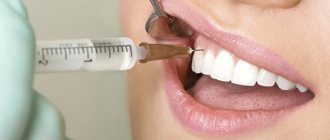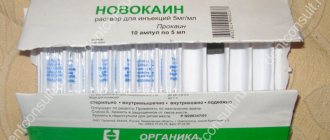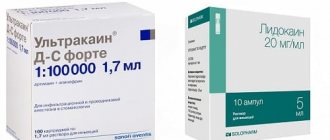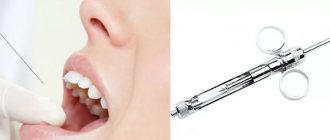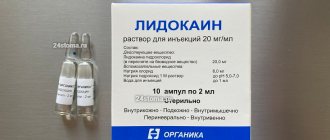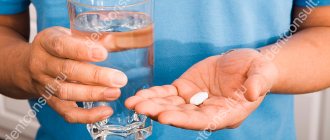Where is euthanasia legalized?
Currently, euthanasia is officially permitted in the following states:
- Netherlands. The law was adopted in 2002. At the same time, a list of conditions was approved that are a significant justification for making this decision. Moreover, each case of euthanasia is reviewed by a special “ethics committee”, which approves or rejects the procedure.
- Belgium. The country also adopted a law in 2002, following the Netherlands. Its provisions apply only to citizens of the state permanently residing in Belgium. The basis for euthanasia is unbearable physical suffering that cannot be alleviated by existing medications.
- Switzerland. In this country, the procedure is allowed to be carried out not only by citizens, but also by foreigners who have expressed their will to die. Special clinics have been created in the state to carry out euthanasia.
- USA. The procedure is not legalized throughout the country. Oregon was the first state to allow euthanasia. Then Washington followed suit, and then Montana. Several years ago, “artificial death” was allowed in seven more states, including California, Hawaii, New Jersey and some others.
- Canada. By law, euthanasia can be carried out only by citizens of the state who have reached the age of majority. The procedure is not performed for foreigners. Most of the country's population actively supports allowing euthanasia, which can help sick people stop suffering and die peacefully. Canadians believe that death must be “justified and foreseeable.”
- Mexico. In this country, euthanasia will be allowed in 2022. Then the “Law on Death with Dignity” was adopted and conditions were approved in which the procedure would be justified.
In 2022, New Zealand held a referendum and vote to legalize euthanasia. The initiative was supported by more than 60% of the country's residents. The law is currently under development and will come into force very soon.
How to store Lidocaine
Home conditions are quite suitable for storing this drug. Optimal conditions are temperatures ranging from 10 to 25 degrees, humidity not higher than 70% and protection from direct sunlight. It is best to store the medicine in a special home medicine cabinet or a tightly closed cabinet.
Lidocaine does not tolerate freezing; during freezing, the drug in various forms partially loses its properties.
Analogs of this medication are:
- Articaine.
- Lawn.
- Lycoin.
- Ecocain.
- Lidochlor.
- Dinexana.
These drugs have the same pronounced local anesthetic effect.
How the procedure works
In order for euthanasia to be approved, it is necessary to write an application, perhaps even more than one. This is done in order to confirm the patient’s sincere desire to take such a serious step. A special commission, which must include doctors, psychologists and lawyers, considers the indications for the procedure, studies the patient’s medical history and makes a final decision.
The commission members also evaluate the patient’s ability to make independent, informed decisions. The attending physician must make sure that the pathology is indeed incurable and there are no methods that can alleviate the patient’s condition.
If the patient does not change his decision during the inspection, and the commission finds compelling reasons to approve euthanasia, the preparation of documentation and the selection of medications begins. The procedure can only be performed by a doctor.
First, the patient is administered strong narcotic analgesics, and then drugs intended directly for euthanasia. They are made on the basis of barbiturate. The medication is administered into the patient's body parenterally.
Allergy to lidocaine
12/11/2020 Anesthesia (pain relief) in dentistry is divided into local and general. Local anesthesia means the introduction of a special drug, under the influence of which the sensitivity of the affected area almost completely temporarily disappears.
Local anesthesia is required:
- in the treatment of deep caries;
- when removing a tooth or pulp;
- when preparing the dentition for prosthetics.
However, in modern dental clinics Lidocaine is used quite rarely, but there may be cases when doctors still resort to it.
Everyone should know about the effect of lidocaine on the human body, since an allergy to lidocaine is a dangerous and, most importantly, unpredictable disease. Many people do not even suspect that a seemingly ordinary painkiller can cause dangerous reactions in the body, for example, anaphylactic shock. A developing allergy to lidocaine does not always manifest itself with mild symptoms; it happens that the patient requires urgent medical attention to eliminate the depression of vital functions.
Causes of allergy to lidocaine
Lidocaine is a medicine that has a complex chemical composition, and many doctors are inclined to believe that any component of this drug can be the culprit in the development of an allergy to lidocaine.
Allergies often develop to methylparaben, a chemical used in anesthetics as a preservative. True allergies should not be confused with side effects, of which lidocaine has a lot. Intolerance to this drug is explained by its neurotoxic and cardiotoxic effects. Under the influence of the components of this medicine, vascular tone changes and skin changes are observed.
Lidocaine intolerance is expressed by the following symptoms:
- palpitations or, conversely, bradycardia;
- headache;
- confusion;
- blurred vision;
- nausea;
- inflammation and necrosis in the area of drug administration.
The signs listed above are rarely observed with the development of a true allergy to lidocaine. In severe cases, after the administration of lidocaine, blood pressure drops and this leads to fainting, and convulsions often occur.
How to check if you are allergic to lidocaine
An allergy to lidocaine does not develop when this drug is first administered. Under the influence of the initial administration of drug components, the immune system remembers these substances as dangerous to humans, and upon subsequent intake, it reacts by producing antibodies.
To suggest the possibility of an allergy to lidocaine in patients, doctors resort to the following methods:
- conduct a survey. It is imperative to find out whether there have been any unusual reactions to any medications in the past and their tolerability in humans. It is also necessary to remember whether any anesthetics were administered in the past, and how the body reacted to them.
- If necessary, the doctor can perform a rapid test for hypersensitivity to lidocaine. To do this, lidocaine in a volume of 0.1 ml is injected intradermally on the inside of any forearm. The results are assessed after 20 minutes; if during this period there are no local changes and general symptoms of intolerance, then the administration of the medicine is allowed.
Naturally, the methods listed above cannot give a 100% guarantee that there will be no allergy to lidocaine. It is possible to accurately find out whether a person has such a reaction only by performing special tests - skin tests and determination of antibodies in the blood.
Return to list
Local remedies
Local preparations help disinfect the surface and relieve pain. These include ointments, gels, sprays, solutions and foams. They eliminate painful symptoms faster than tablets, reduce swelling, disinfect the surface, and subsequently promote tissue restoration and regeneration. Before applying them, the wound should be treated with one of the antiseptics:
- Chlorhexidine,
- Miramistin,
- Betadine,
- hydrogen peroxide 3%,
- Furacilin tablet diluted in water.
After this procedure, healing agents are applied. In case of severe burns of III A-IV degrees, their use is prohibited without a doctor’s instructions, since lubrication can cause infection, further injure the affected area, or cause severe pain to the victim. In addition, there is a high probability of overdose of active components due to direct absorption of the drug into the blood, which often leads to disruptions of the central nervous system and the active manifestation of side effects.
For grade 1-3 injuries, such drugs are necessary - they form a protective film and do not allow pathogenic microorganisms to penetrate deep into the wound.
Panthenol
Panthenol is one of the most famous and widespread drugs for skin injuries. The most convenient form of release is spray foam, since application does not require direct contact with the surface, which eliminates the pain of treatment. Thanks to the active component - dexpanthenol - the foam helps reduce inflammation, has a wound-healing and disinfectant effect, and stimulates the process of tissue repair without scarring .
Painkiller pills
The next step is taking analgesics - special medications that block pain . Before using them, you should make sure that the victim is not allergic to the components and has no contraindications to their use.
The most common medications that are present in every home medicine cabinet are Analgin and Tempalgin. Effective painkillers also include Dollar (Dolaren), Pentalgin, Nise, Solpadeine. All of them have a number of contraindications and side effects, so care should be taken to prevent the victim’s condition from worsening. Some medications may increase bleeding from open wounds.
You should not expect rapid action from tablets: they require time to dissolve and be absorbed into the blood. Therefore, if the victim feels tolerable, it is better to wait for a doctor who will administer the necessary drug intravenously or intramuscularly . If the medicine was nevertheless taken, doctors should be notified about this so that when providing assistance there is no incompatibility of medications.
Intramuscular drugs
It is important to remember that subcutaneous, intramuscular and intravenous injections should not be performed without appropriate preparation. Such analgesics should only be administered by a healthcare professional.
For this reason, they cannot be purchased in pharmacies without a prescription. Medicines in injections are more potent than tablets. They have a number of contraindications. Exceeding the permissible dosage causes respiratory and cardiac arrest . Violation of the process of introducing a particular drug leads to serious consequences.
Emergency physicians often use synthetic morphine substitutes - Promedol and Moradol. They act quickly and safely, but have their side effects. Moradol is not administered to persons under 18 years of age. If there is a threat of life-threatening painful shock, the doctor may inject morphine.
Basic information
There are several dosage forms: solution, gel, ointment, spray, eye drops. In medical institutions, an injection form and spray are used.
Mechanism of action
Drugs belonging to class IB are used to reduce ventricular arrhythmia.
Although they are not strong enough antiarrhythmics, they have minimal effect on the atrial myocardium. In addition, they do not directly close potassium channels.
Pharmacodynamics
The local anesthetic effect is possible due to the stabilization of neuronal membranes, which reduces their permeability to sodium ions. This blocks the reproduction and transmission of nerve signals, suppresses the transmission of both pain and other modalities of signals.
Possibility of intoxication
Lidocaine anesthesia has a persistent analgesic effect. This is a fairly powerful drug.
Its dosage is often calculated in just a few milligrams. Therefore, it has very strict rules and regulations for application.
Causes
What causes intoxication? Most often, an overdose of lidocaine occurs due to the fault of health workers. It is recommended to use a lower dose to ensure a lasting effect.
Therefore, one of the reasons leading to lidocaine overdose is incorrectly calculated dosages.
Dosage regimen
The volume of the injected composition is determined by the area of tissue that needs to be anesthetized, as well as the type of surgical intervention.
Alcohol for burns
Many people believe that alcohol can serve as an anesthetic in any situation. But, from the point of view of medicine and human physiology, this method is not only useless, but also dangerous.
- Alcohol increases blood circulation, which can worsen the situation with open wounds and bleeding.
- It is incompatible with many medications, changes their properties, reduces their effectiveness, or creates a toxic compound with them that poisons the body.
- If the victim is weak, taking alcohol-containing products can lead to loss of consciousness and fainting.
The choice of anesthetic method always remains with the patient or the first aid provider if the victim is unconscious. But, as practice shows, the use of traditional medicines is much safer and more effective. Therefore, your home first aid kit should always have a reliable remedy that will help out in such an emergency as getting a burn .
Complications
The harm from toxemia with this drug can hardly be overestimated. Consequences may include:
- paresis of the respiratory muscles;
- intracardiac conduction disorder;
- allergic manifestations, Quincke's edema;
- collapse.
If antidotes are not administered in a timely manner, this will lead to cardiac arrest and death.
Expired medications won't kill you, but there are a few things you need to know.
Of course, if you have a question about a specific product, you should consult your doctor. We under no circumstances advise you not to take seriously what is written on the packaging. We just want to explain that medicines do not spoil like food. They may simply become less effective.
Traditional methods
Some victims or first aid providers often use alternative medicine techniques. Doing this is strictly prohibited. Traditional methods of treatment can be used at home during the healing process of injuries or for first-degree burns.
- A compress of grated raw potatoes relieves pain well. The pulp is squeezed out, placed between layers of gauze and secured to the affected area with a bandage. Leave for 15-20 minutes.
- Aloe pulp or juice effectively eliminates pain, disinfects the surface and cools it. The plant mass is applied to the damaged area and fixed for 30 minutes.
- Lubricating with fermented milk products (kefir, sour cream, yoghurt, fermented baked milk) cools the skin and neutralizes the burning sensation.
Such treatment methods can be used in conditions where quick medical care is not available, for minor closed injuries and only after cooling. They should not be used on open, oozing, inflamed or infected wounds .

